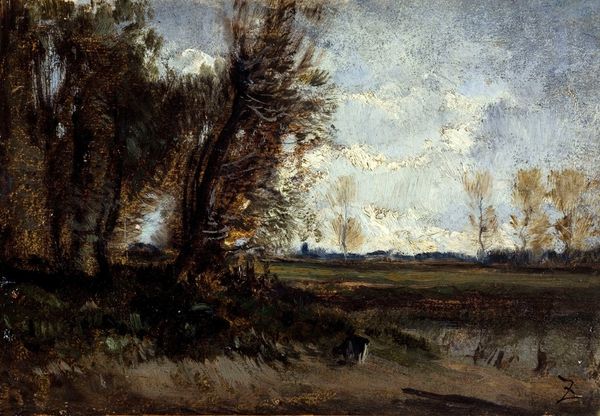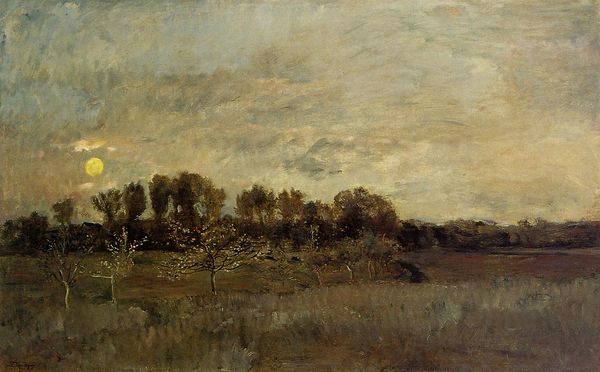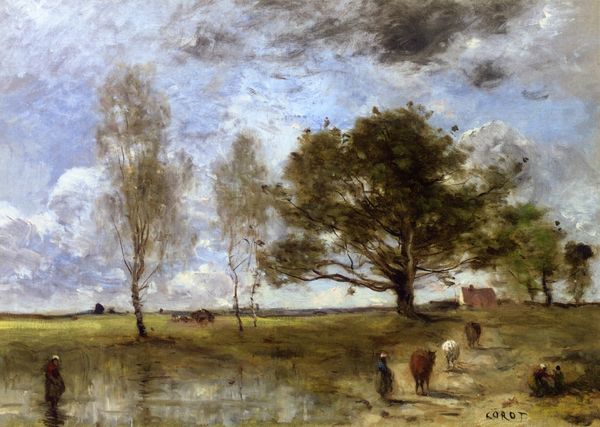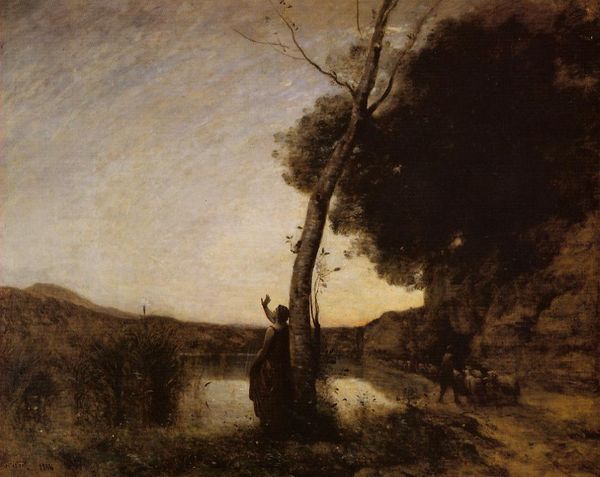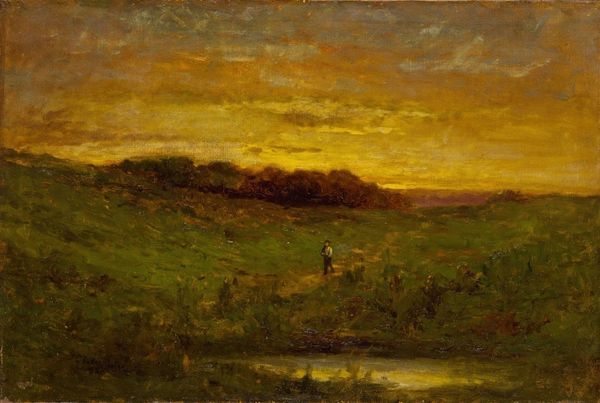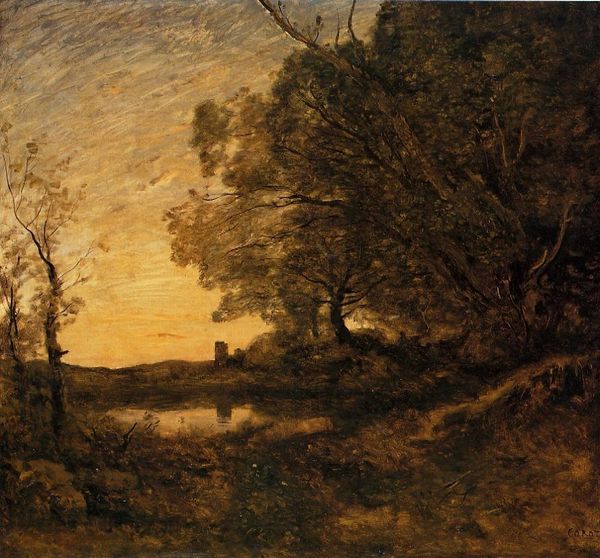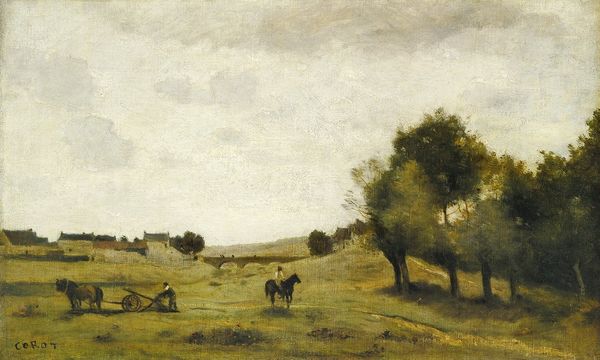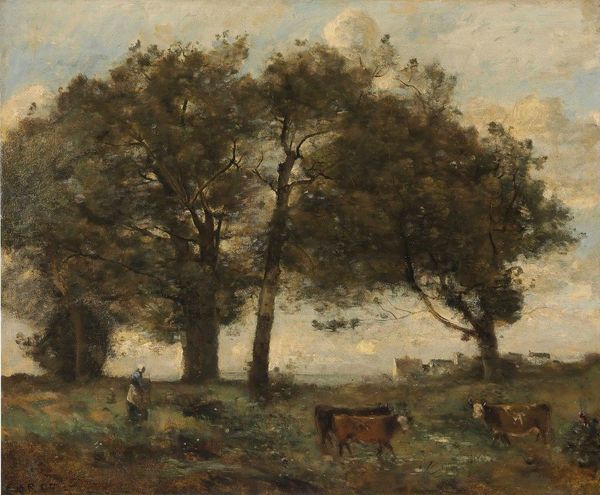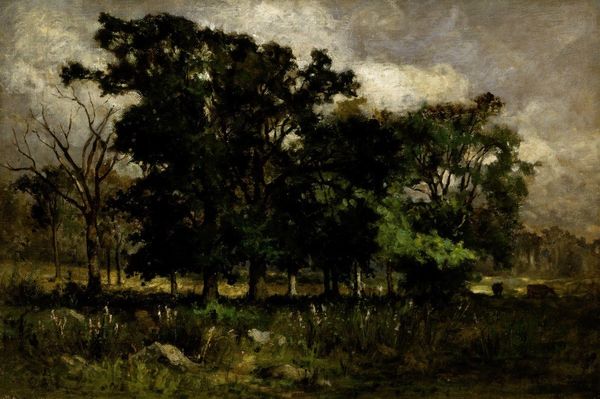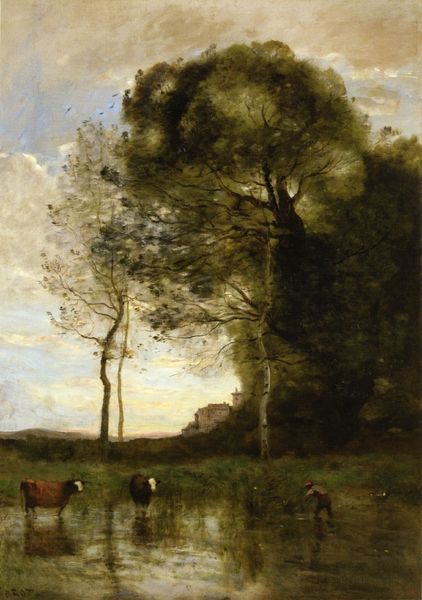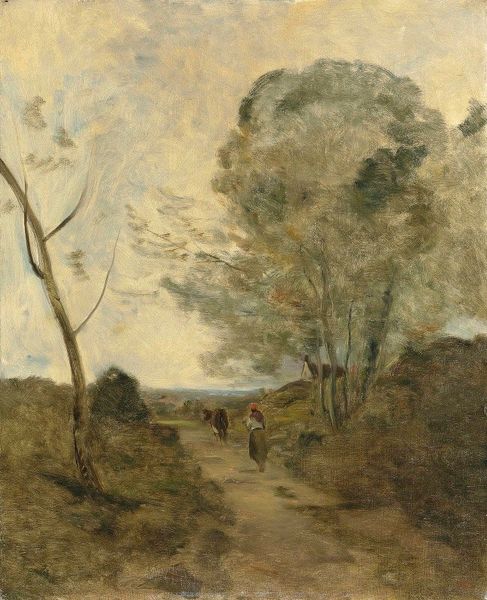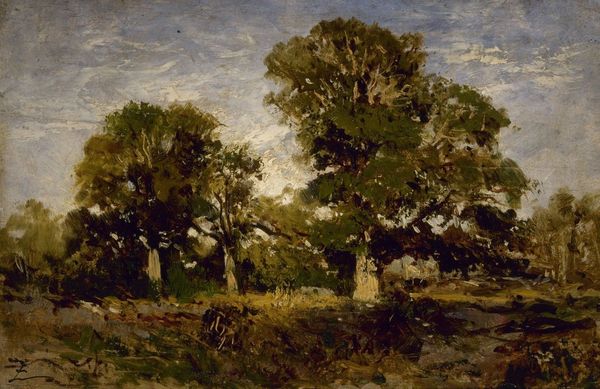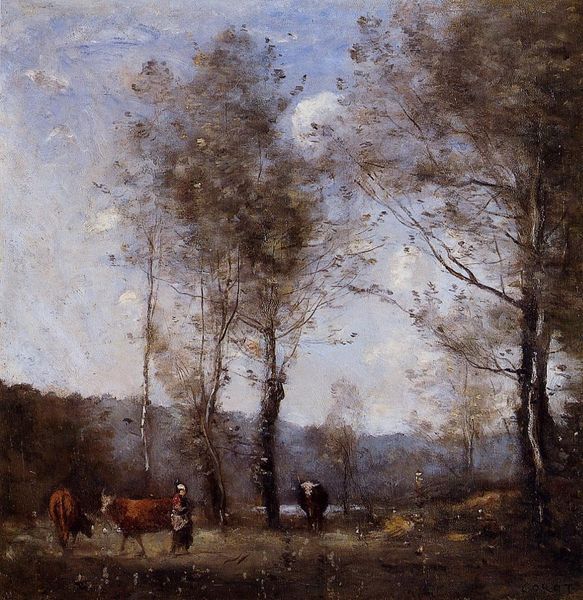
Copyright: Public domain
Camille Corot made this oil on canvas painting, Cows on the Banks of the Gue, some time in the mid-19th century. Corot lived through a period of revolution, and responded to the changing social and political landscape in France with a new, direct form of landscape painting. He removed the historical and allegorical figures which had been a staple of landscape painting. This painting presents a scene of rural life, with cattle and a female herder at a watering place, that might have been regarded as mundane. The focus on everyday scenes and direct observation was part of a shift in the art world. Artists turned away from the old academic system that had been dominant. They looked to capture the realities of modern life and explore new ways of seeing and representing the world around them. Corot’s paintings were embraced by some as progressive, while others found them too radical a departure from tradition. To understand Corot’s paintings more deeply, we can look to historical sources, such as the writings of critics, the records of art institutions, and even the personal correspondence of artists and patrons. These resources can help us understand how art reflects and shapes the social world around it.
Comments
No comments
Be the first to comment and join the conversation on the ultimate creative platform.
